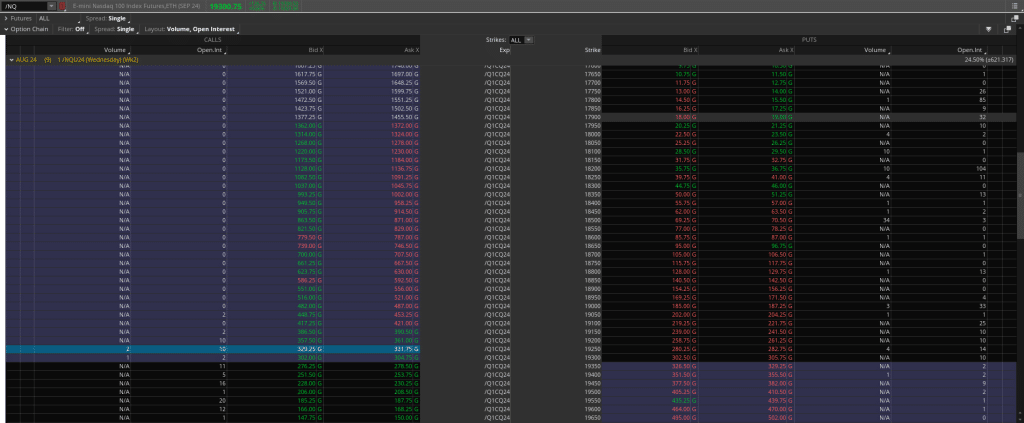How To Short Stocks
How To Short Stocks
A Comprehensive Guide

Introduction
Investing in the stock market offers various opportunities for financial growth, and one strategy that experienced investors often employ is short selling. While traditional investing focuses on buying low and selling high, short selling flips this concept on its head. This comprehensive guide will delve into the intricacies of short selling, explaining how it works, the risks involved, and strategies to maximize your potential profits.
Understanding Short Selling
What is Short Selling?
Short selling is a trading strategy where an investor borrows shares of a stock from a broker and immediately sells them on the open market. The investor’s goal is to buy back the shares at a lower price in the future, return them to the lender, and pocket the difference as profit. Essentially, short sellers are betting that a stock’s price will decline.
The Mechanics of Short Selling
- Borrowing shares: The investor contacts their broker to borrow shares of the stock they want to short.
- Selling borrowed shares: The borrowed shares are sold on the open market at the current market price.
- Waiting for price movement: The investor waits for the stock price to fall.
- Buying back shares: If the price drops, the investor buys back the shares at the lower price.
- Returning shares and profit: The borrowed shares are returned to the lender, and the investor keeps the difference as profit.
Example of a Successful Short Sale
Let’s consider a hypothetical scenario:
- An investor believes that XYZ Corp’s stock, currently trading at $100 per share, is overvalued.
- The investor borrows 100 shares from their broker and sells them for $10,000 ($100 x 100 shares).
- Over the next month, XYZ Corp’s stock price falls to $80 per share.
- The investor buys back 100 shares for $8,000 ($80 x 100 shares).
- The investor returns the borrowed shares to the broker and keeps the $2,000 difference as profit (minus any fees or interest).
The Risks of Short Selling
While short selling can be profitable, it comes with significant risks that investors must understand before engaging in this strategy.
Unlimited Loss Potential
Unlike traditional investing where losses are limited to the initial investment, short selling has theoretically unlimited loss potential. If a stock’s price rises instead of falls, the short seller must buy back the shares at a higher price, resulting in a loss.
Example of Potential Losses
Continuing with our XYZ Corp example:
- Instead of falling, XYZ Corp’s stock price rises to $150 per share.
- The investor is forced to buy back 100 shares at $15,000 ($150 x 100 shares).
- This results in a $5,000 loss ($15,000 – $10,000), not including fees or interest.
Short Squeeze
A short squeeze occurs when a heavily shorted stock’s price begins to rise, forcing short sellers to buy back their positions to minimize losses. This buying pressure can drive the stock price even higher, potentially leading to significant losses for short sellers.
Regulatory Risks
Short selling is subject to various regulations, including the uptick rule, which restricts short selling when a stock has already declined by a certain percentage. Failure to comply with these regulations can result in penalties or trading restrictions.
Borrowing Costs and Margin Requirements
Short selling typically involves borrowing costs and margin requirements set by brokers. These fees can eat into potential profits and increase the risk of losses.
Steps to Short Selling
To engage in short selling, investors must follow these steps:
- Open a margin account: Short selling requires a margin account with a broker that allows this type of trading.
- Research potential stocks: Identify stocks that you believe are overvalued or likely to decline in price.
- Check availability: Ensure that the stock you want to short is available for borrowing from your broker.
- Place the order: Submit a short sell order through your brokerage platform.
- Monitor your position: Keep a close eye on the stock’s performance and be prepared to act if the price moves against your position.
- Close the position: Buy back the shares to close your short position, either to take profits or cut losses.
Strategies for Successful Short Selling
To increase the chances of success when short selling, consider employing these strategies:
Fundamental Analysis
Conduct thorough research on a company’s financials, industry trends, and market position. Look for:
- High debt levels
- Declining revenue or profit margins
- Negative cash flow
- Intense competition or market saturation
Technical Analysis
Use chart patterns and technical indicators to identify potential short-selling opportunities:
- Downtrends
- Bearish chart patterns (e.g., head and shoulders, double top)
- Overbought conditions indicated by oscillators like RSI or Stochastic
News and Sentiment Analysis
Stay informed about company-specific news and overall market sentiment:
- Negative earnings surprises
- Management changes or scandals
- Regulatory issues or legal troubles
- Industry-wide challenges
Risk Management
Implement risk management techniques to protect your capital:
- Set stop-loss orders to limit potential losses
- Diversify your short positions across different sectors
- Avoid shorting stocks with high short interest to minimize the risk of a short squeeze
Timing Your Entries and Exits
- Consider shorting after a stock has shown signs of weakness rather than trying to pick the exact top
- Take profits incrementally as the stock declines
- Be prepared to close your position quickly if the trend reverses
Advanced Short Selling Techniques
Pairs Trading
Pairs trading involves simultaneously shorting one stock and going long on another related stock. This strategy aims to profit from the relative performance of the two stocks while reducing overall market risk.
Short Selling ETFs
Exchange-Traded Funds (ETFs) can also be shorted, allowing investors to bet against entire sectors, industries, or market indices.
Options Strategies
Using put options or put spreads can provide similar benefits to short selling with limited downside risk.
Legal and Ethical Considerations
While short selling is a legal practice, it has faced criticism and scrutiny:
- Some argue that short selling can exacerbate market declines and contribute to financial instability.
- There have been cases of illegal naked short selling, where shares are sold short without first borrowing them or ensuring they can be borrowed.
- Short sellers must be cautious to avoid engaging in market manipulation or spreading false information about companies.
Conclusion
Short selling can be a powerful tool in an investor’s arsenal, offering the potential to profit from declining stock prices. However, it comes with significant risks and requires careful analysis, strategy, and risk management. Before engaging in short selling, investors should thoroughly educate themselves, practice with paper trading, and consider consulting with financial professionals.
Remember that short selling is generally considered an advanced trading strategy and may not be suitable for all investors, particularly those with a low risk tolerance or limited trading experience.
FAQs
Q1. Is short selling legal?
Yes, short selling is legal, but it is regulated by government agencies and subject to certain restrictions.
Q2. Can I short sell any stock?
No, not all stocks can be short sold. Stocks that are hard to borrow or in high demand may not be available for short selling.
Q3. How long can I hold a short position?
There is no time limit for how long an investor can hold a short position. However, the longer the position is held, the greater the risk of losses if the stock price increases instead of decreasing.
Q4. Can short selling cause a market crash?
Short selling alone cannot cause a market crash, but it can contribute to increased volatility in the market.
Q5. How much money do I need to short sell a stock?
The amount of money needed to short sell a stock depends on the price of the stock and the requirements of the brokerage account. Some brokers may require a minimum account balance or margin requirement before allowing short selling. It is important to have sufficient funds to cover any losses that may occur.
Q6. Is short selling suitable for novice investors?
Short selling is a more advanced investment strategy and may not be suitable for novice investors who do not have a clear understanding of the risks involved. It is important to do thorough research and consult with a financial advisor before engaging in short selling.
Q7. Can I short sell without a margin account?
No, short selling typically requires a margin account, which allows investors to borrow funds from the brokerage to cover losses. It is important to have sufficient funds in the account to cover any losses that may occur.
Q8. Are there any alternatives to short selling?
Yes, there are alternative investment strategies that can be used to profit from a decline in a stock’s price, such as buying put options or using inverse ETFs.
Q9. Can short selling be used for any type of asset?
Short selling can be used for stocks, but it is also possible to short sell other types of assets such as currencies, bonds, and commodities.
Q10. How can I minimize the risks of short selling?
Investors can minimize the risks of short selling by doing thorough research on the companies they plan to short sell, using effective strategies, setting stop-loss orders, and having sufficient funds to cover any losses that may occur. It is also important to have a clear understanding of the risks involved and to consult with a financial advisor before engaging in short selling.
In conclusion, short selling is a sophisticated investment strategy that offers the potential for profits in declining markets. However, it comes with significant risks and requires careful analysis, strategy, and risk management. By understanding the mechanics, risks, and strategies associated with short selling, investors can make more informed decisions about whether this approach aligns with their investment goals and risk tolerance.
As with any investment strategy, it’s crucial to continue learning, stay informed about market conditions, and adapt your approach as needed. Remember that successful short selling often requires patience, discipline, and a willingness to cut losses when necessary. With practice and experience, short selling can become a valuable tool in a well-rounded investment portfolio.
Check out our articles on:
- Introduction to Options Trading
- Mastering Butterfly Spreads
- The Power of Diagonal Spreads
- The Power of Iron Condors
- The Power of Vertical Credit Spreads
Elevate Your Options Trading Skills
Ready to master trading options? Join our community for in-depth education on options trading, live trading sessions, and expert analysis of options trading strategies. Sign up today to start profiting from market swings using advanced options trading strategies!
Below are the links:
To your success,

Billy Ribeiro is a renowned name in the world of financial trading, particularly for his exceptional skills in options day trading and swing trading. His unique ability to interpret price action has catapulted him to global fame, earning him the recognition of being one of the finest price action readers worldwide. His deep comprehension of the nuances of the market, coupled with his unparalleled trading acumen, are widely regarded as second to none.
Connect with us:






